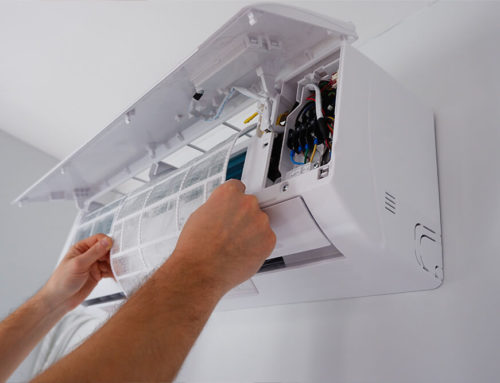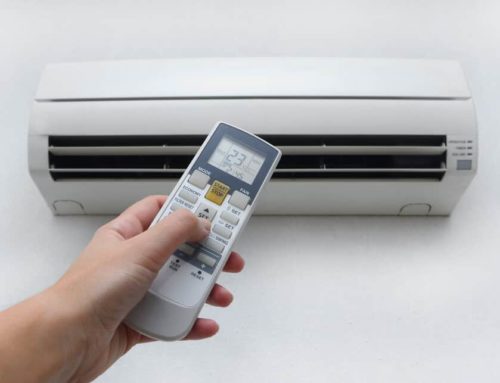Honeywell’s T-86 thermostat—affectionately known as The Round—is so universally known and so well designed, it appears in the Smithsonian’s collections. Your home may still have The Round on a wall, not as art, but to run your heating and cooling systems. The Round is 1953 technology; fuel oil cost $2.92 a barrel back then (which is still only $25.72 in today’s prices). Today home heating oil hovers over $85 a barrel; modern thermostats not only function better than the old mercury switch models, they can help you save energy costs. Wifi thermostats, the leading edge of heating, ventilation and air conditioning (HVAC) technology, are now offered by nearly every major manufacturer. Find the one that fits your needs and start saving money today.
Wifi Thermostat Benefits
HVAC systems provide treated, cooled and heated air for your home, but heating or cooling depends on outside temperatures, how many family members are home and other factors. Keeping your central air conditioner or furnace running during empty-house hours is wasteful and increases your carbon footprint.
A wifi thermostat connects by wire to your HVAC system and then wirelessly to your home’s network. You can control your home environmental systems remotely, using your smartphone. Your wifi thermostat can monitor outdoor temperatures, adapt to changing family schedules, and increase energy efficiency.
Wifi thermostats provide feedback on your heating and air conditioning, advise filter changes, and anticipate your desired “return home” temperatures.
C-Wire Issues
All wifi thermostats benefit from having a C-wire, or common wire, but not all home HVAC systems have a common wire. Battery-powered thermostats and older HVAC units may have only two wires. The C-wire allows a constant flow of 24-volt power to the thermostat. Your C-wire may be tucked inside the wall behind your current thermostat, or you may not have one.
A wifi thermostat C-Wire workaround kit may be available for your model, at additional cost. Consider professional installation and allow an HVAC contractor to solve the C-wire dilemma and expertly install your new wifi thermostat.
Ecobee
First on the wifi thermostat scene in 2007 was Canadian-based Ecobee; its Ecobee3 is the latest offering. It features one remote sensor to take readings throughout your home, but you can have up to 32 sensors. These data-gather sensors make your Ecobee3 a learning machine. The more information it gathers about your home, the better it can provide ideal heating and cooling.
The sensors measure temperature and occupancy by the room, and can override scheduled cycles to provide you comfortable working temperatures if, say, you are home with a sick child. It also knows the difference between your Chihuahua and your child, and avoids wasting energy to cool your kitty.
The Ecobee3 wifi thermostat is designed for do-it-yourself installation. Its sleek, smooth housing offers a 3.5” LCD touchscreen that provides similar iconography to a smartphone. Online videos, a built-in level and all mounting hardware included make installation easy.
Nest
The design of the Nest wifi thermostat is reminiscent of the enshrined Round, but similarities end at shape. The Nest thermostat leaps past programmable thermostats by learning your family’s routine and providing increasingly efficient heating and cooling. One week in your home and this visitor becomes part of the household. You teach the unit your desired temperatures simply by turning the dial, and it learns the rest. As a reminder to conserve resources, the Nest Leaf appears on the unit’s screen when you dial to energy-saving temperatures.
Like the Ecobee, a Nest smartphone app allows you to monitor and control your HVAC system remotely. The Nest will also reach out to you, letting you know if your home is too hot or too cold.
An easy installation, the Nest Learning wifi thermostat installs in about half an hour.
Lyric
Honeywell is still around, with its Lyric, a remarkably easy wifi thermostat to install and program. The 21st century version of The Round is, naturally, round, but has details such as motion-sensitive illumination, a greatly simplified touchscreen with smartphone-like icons, and fuzzy logic inside that compensates for humidity levels and outdoor temperatures.
Installation begins by downloading the Lyric app, which will then guide you through the process (you can also download a PDF or watch an online video). Like other wifi thermostats, the Lyric requires no step-by-step programming, but learns your occupancy patterns and temperature preferences, then programs itself. Of course, using your smartphone, you can program your wifi thermostat for unique situations such as dinner parties or late nights, conserving energy for each life event.
Many other wifi thermostats have entered the market, with the Ecobee3, Nest and Lyric being front-runners for installation, ease of use and reasonable cost. Consider the complexity of your family’s life, your energy bills, and the cost of the wifi thermostat to choose the one that best suits your needs.




